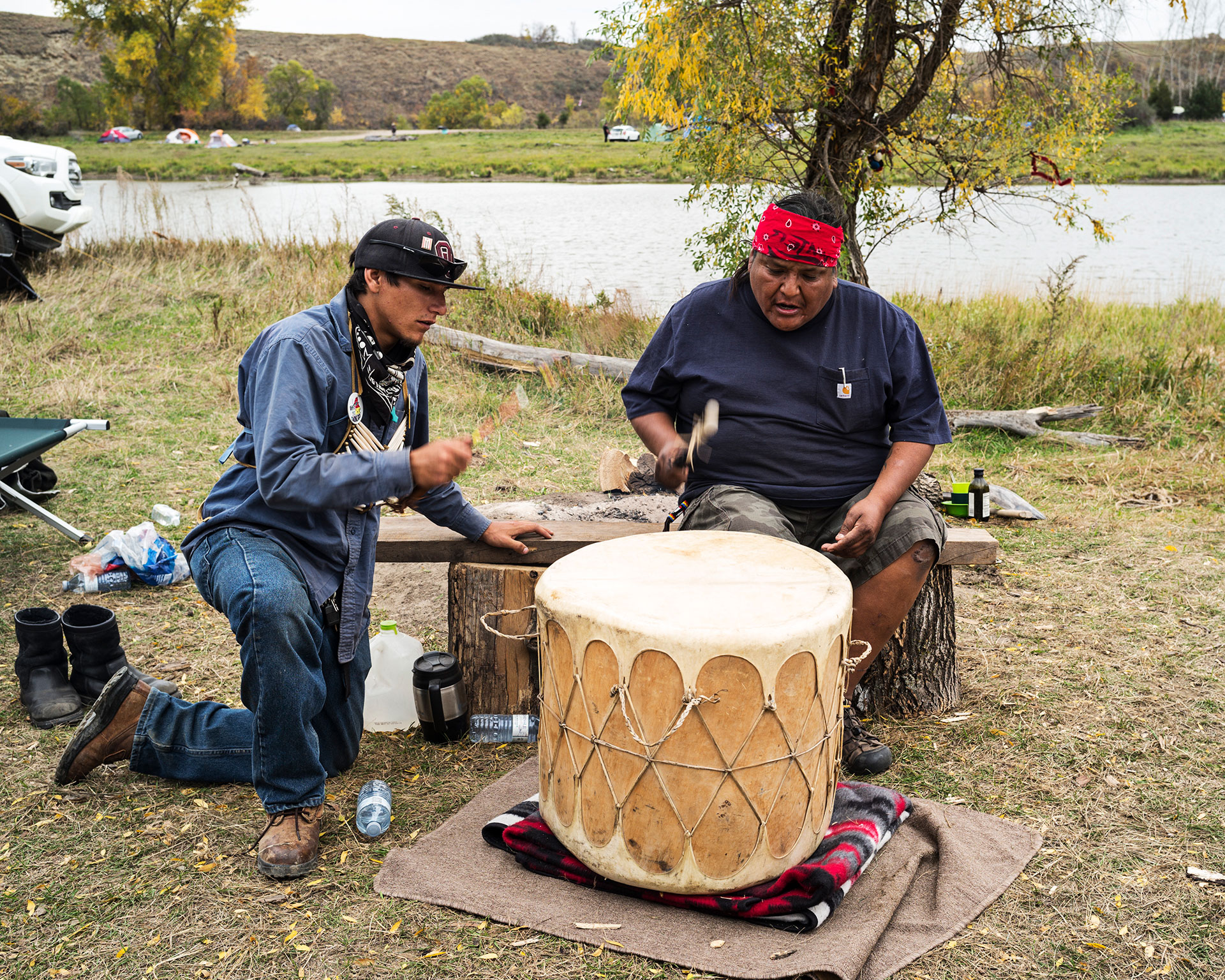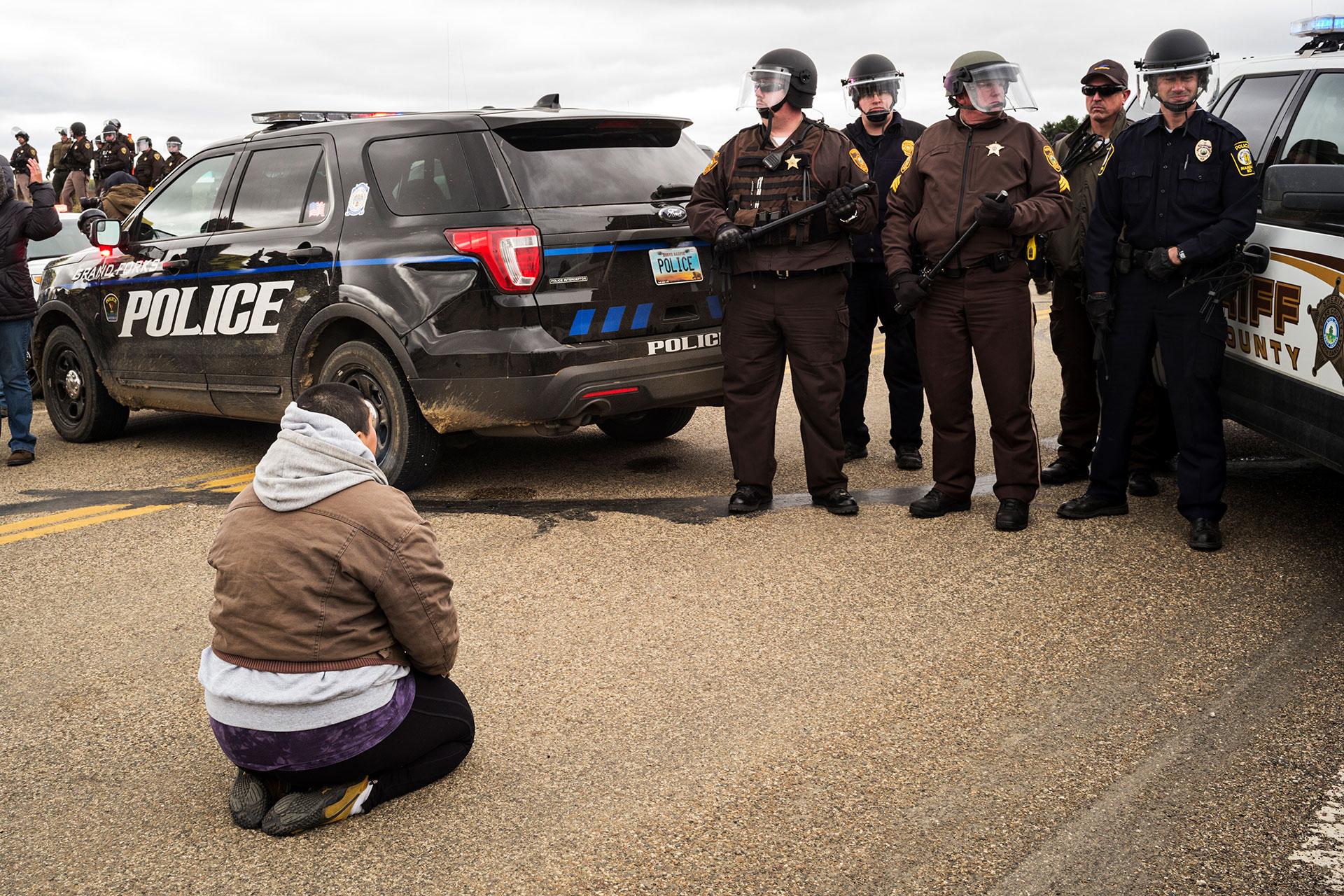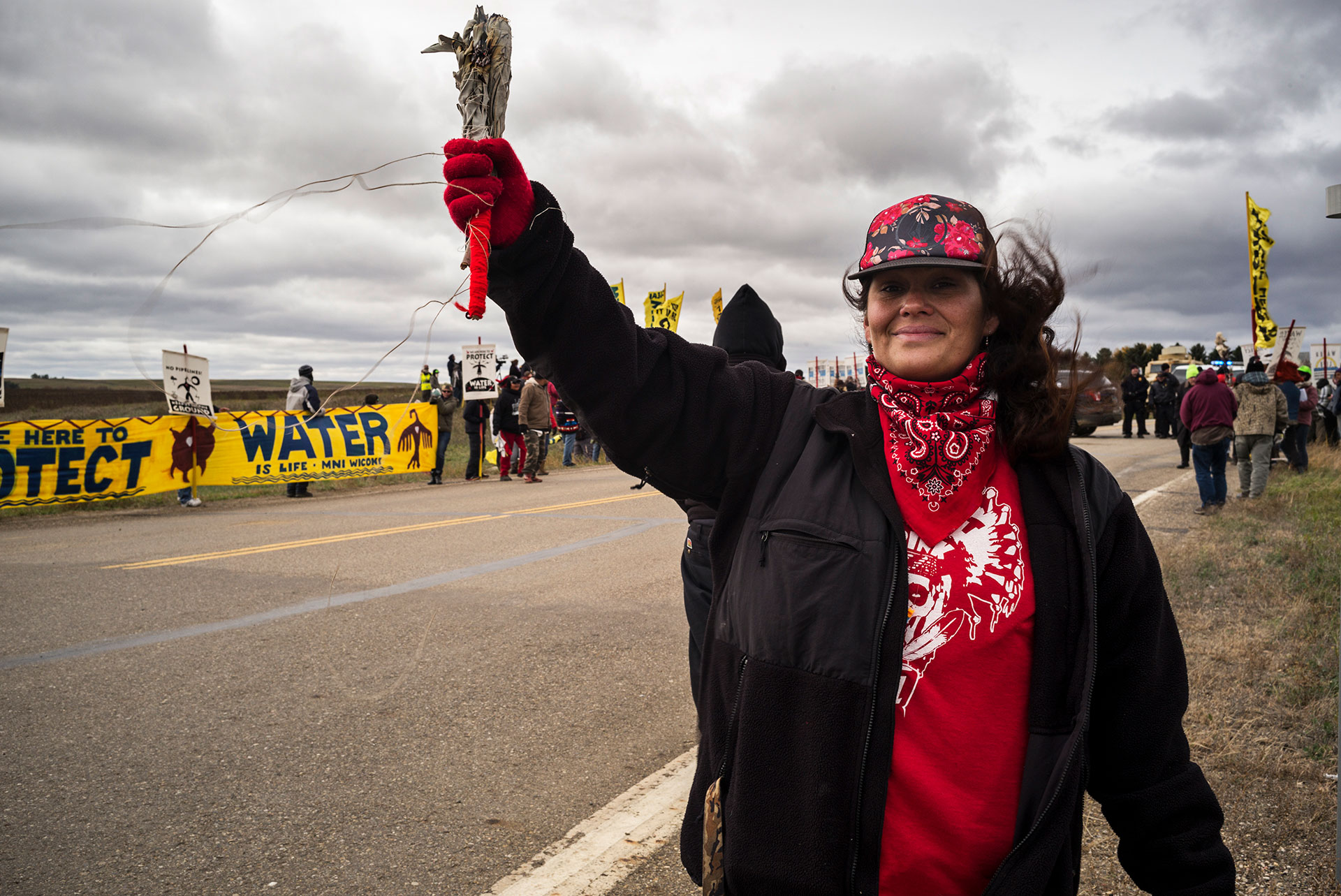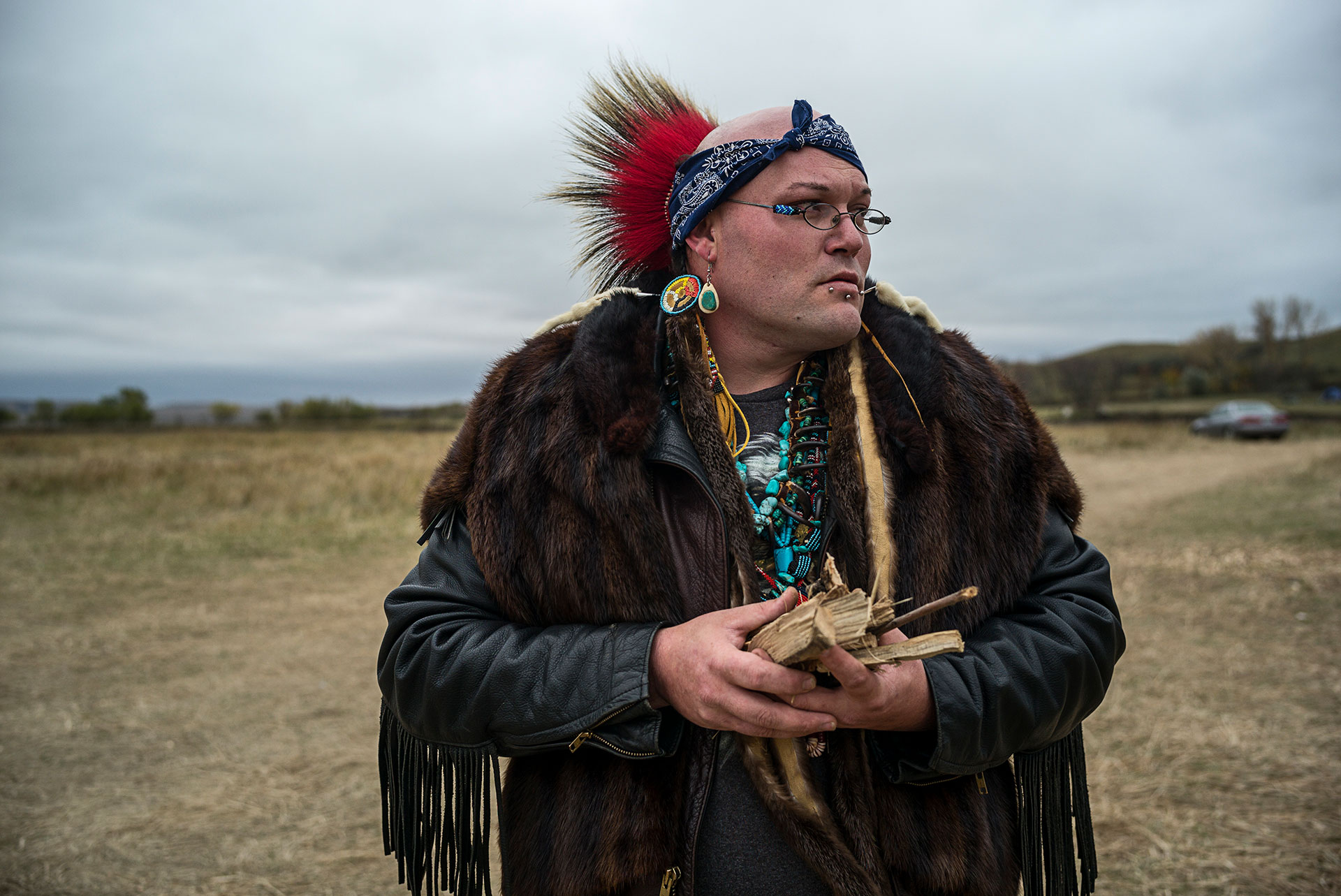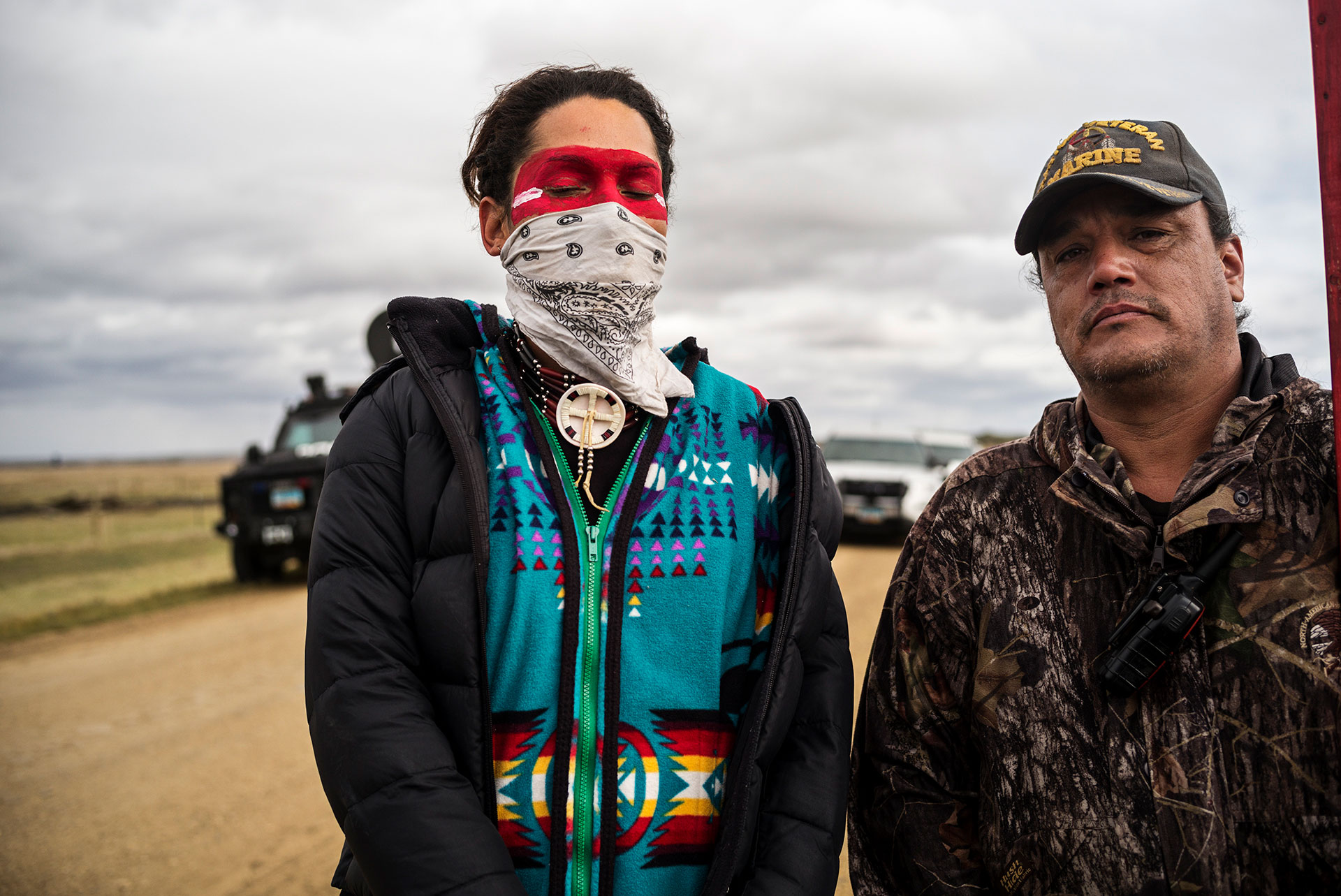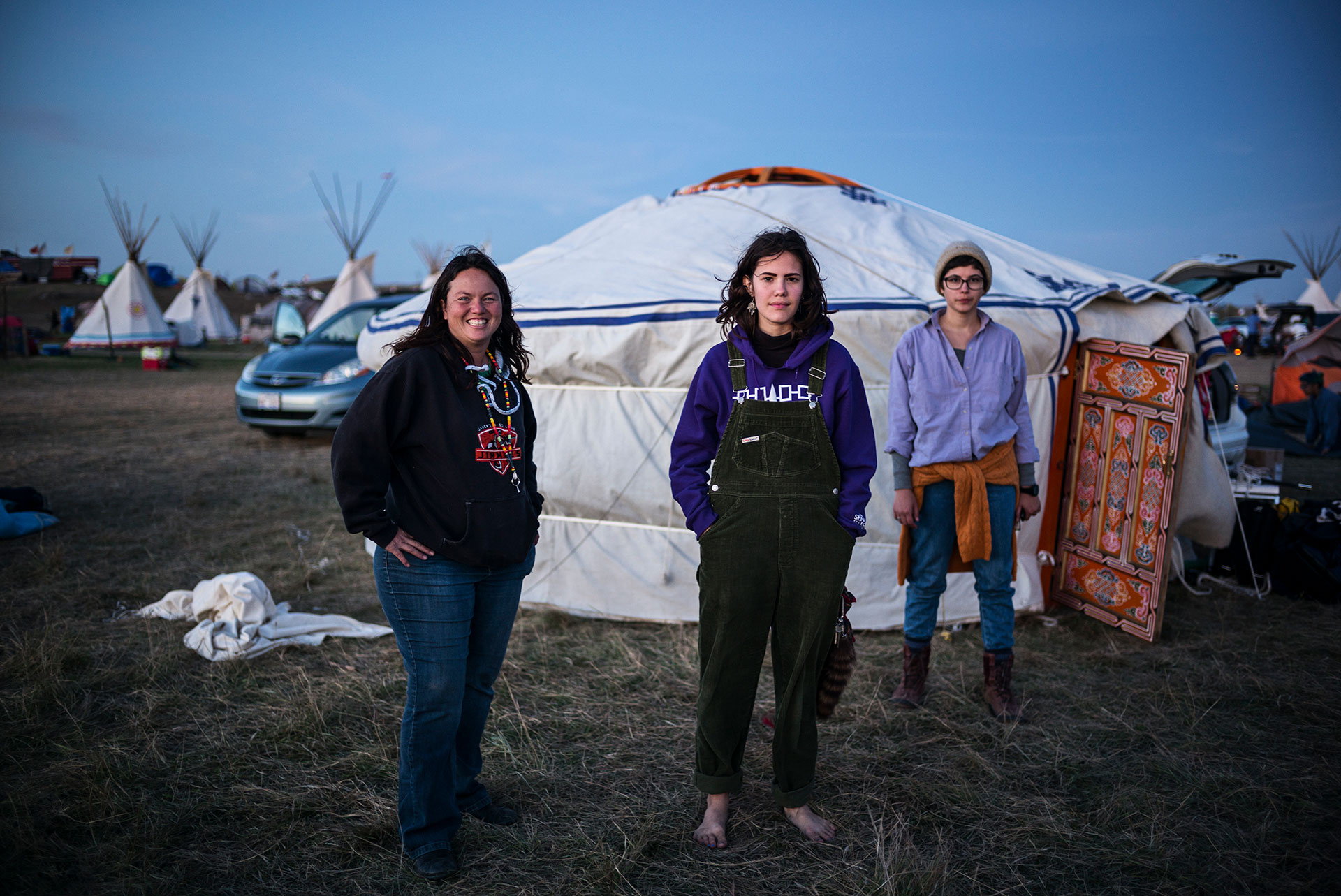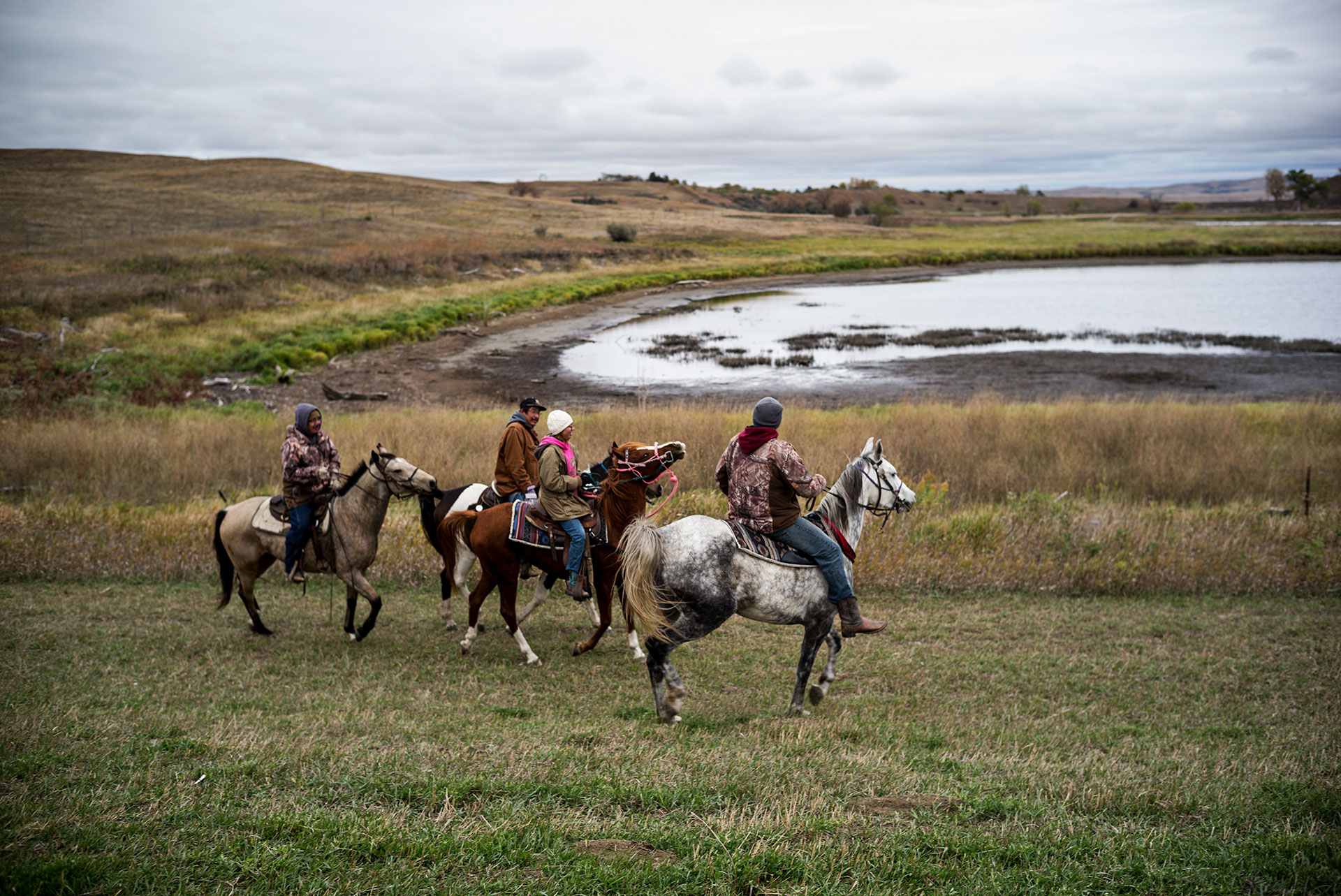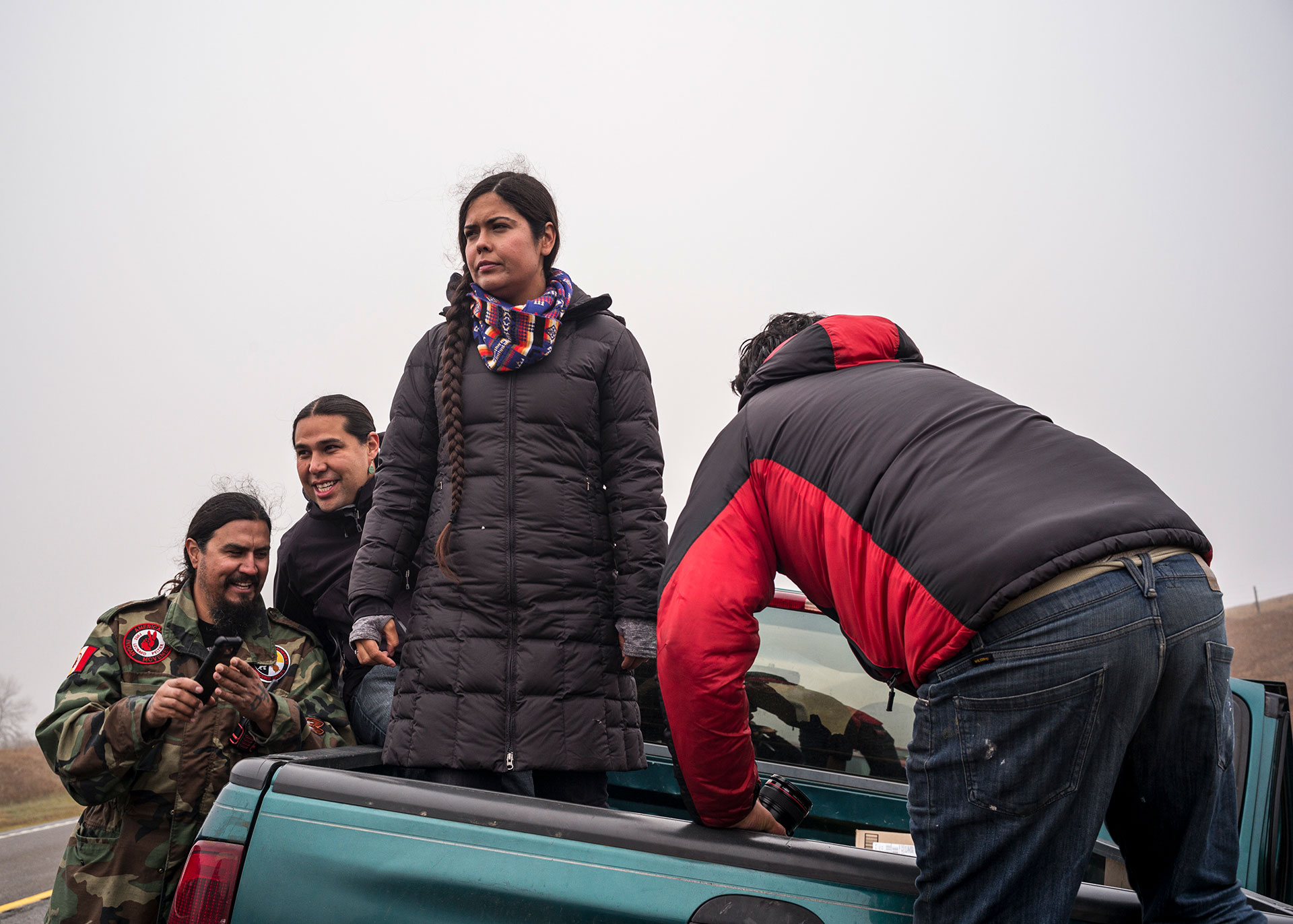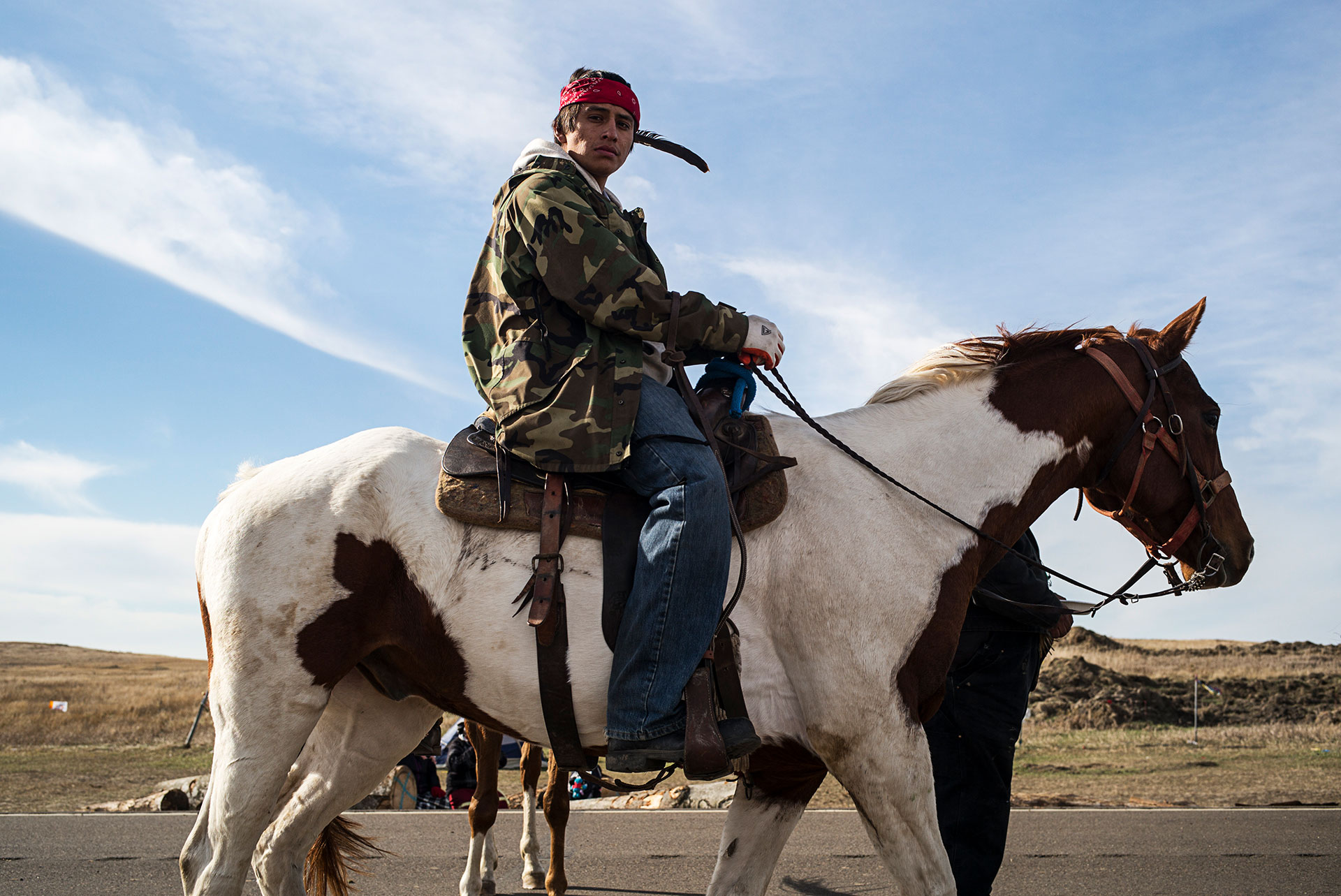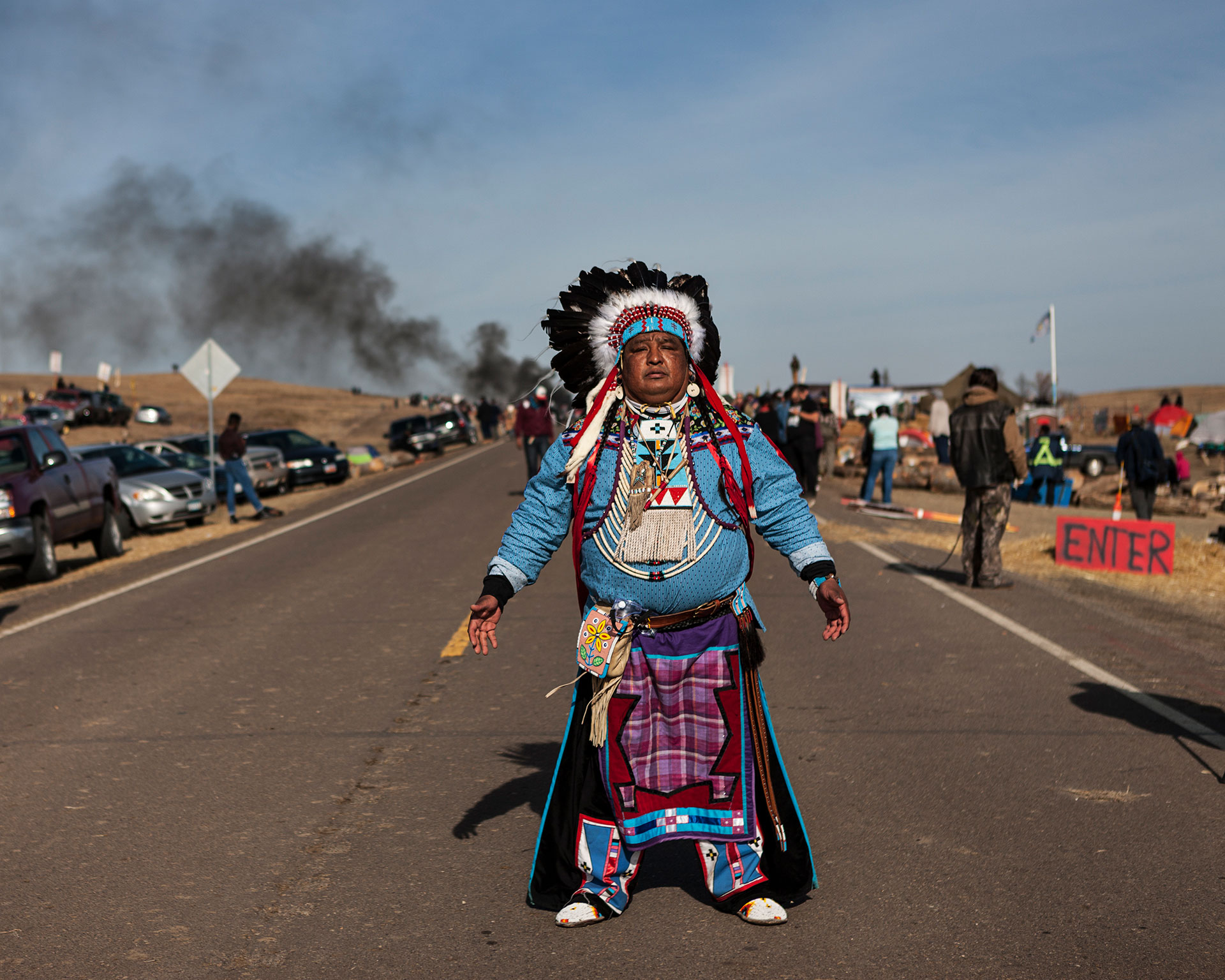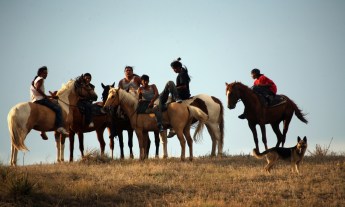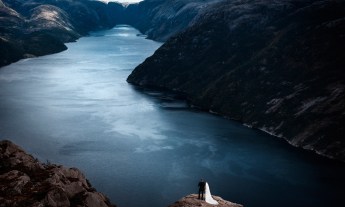In September 2016, photographer Camille Seaman joined protesters at the Standing Rock Reservation in North Dakota. Here, she brings us up close with some of the many people who have been drawn there to defend the water and the earth.
[Editor’s note: The Dakota Access pipeline was completed in 2017. Despite continued calls to shut it down, it transports about 500,000 barrels of crude oil each day.]
In September, I felt called — not just as an indigenous person of the Shinnecock Nation but also as a photographer — to join the people standing up for clean water and protecting the land at the Standing Rock Sioux Reservation in North Dakota. I saw it as a chance to document a historic moment, a gathering of tribes that hasn’t been seen in over 100 years, from the inside. Since April, protesters have gone there to try to block construction of the 1,172-mile Dakota Access Pipeline, which would cut through tribal lands and compromise its water supply in order to carry oil from North Dakota to Illinois. As I approached a camp and saw all the tipis, all the individuals brought together as defenders of water, I found myself pushing back tears. Ranging in age from infants to elders, people had traveled from all over the country and the world to stand in solidarity with the protesters.
I stayed at the Oceti Sakowin camp, the largest of Standing Rock’s four camps and home to around 1500 people while I was there. Before dawn every day, a rider on horseback (or, sometimes, a driver in a car) would make their way through camp, saying, “Good morning, my relatives! It’s a beautiful day. Wake up, and remember why you are here!” Then we would all gather in a circle and pray as the sun rose. Our prayers would be for those who opposed us, those who supported us from afar and those who were among us. These prayers continued all day and all night in many forms. In the evening, the sounds of singing and of drums (our mother’s heartbeat) could be heard in the dark. It was truly a wonderful place to be.
When I left the camp after a month, I wept again. This time, I felt like I was walking away from my family in their moment of dire need as the police kept pushing towards our sacred site. Despite President Obama’s requests to put a temporary halt on construction and to search for an alternate route, the pipeline operator has persisted in moving forward with its plans to tunnel under a reservoir used by the Sioux. Now back home and far away in California, I’m helplessly watching the protests and preparing to go to Antarctica to continue my long-term photographic project on the polar regions (TED Talk: Haunting photos of polar ice). But my resolve remains: We should take this opportunity to shift away from fossil fuels. Here are some of the portraits I took while in Standing Rock.
The heartbeat of the people
Benjamin Conrad and Willard Price sing and drum by the side of the Cannonball River at the Oceti Sakowin camp. Ben is from the Wind River Cheyenne and the Arapaho Reservation, and Will, an artist from the Diné, lives in Santa Fe, New Mexico. At night, Will would sit, sing and drum, and people would emerge from the dark to join him before disappearing into the starry night.
Prayer in the face of the police
Caro Gonzales is Chemehuevi and a two spirit (or LGBT). Caro works with Bernie Sanders and the National Congress of American Indians to create policy solutions that respect indigenous people; she is also an organizer for Idle No More, an indigenous movement that defends the earth, water, land and air from environmental degradation and destruction. In August, Caro and her wife arrived at Standing Rock, where they’ve organized peaceful direct actions, rallies and art projects with organizations such as the Indigenous Environmental Network, 350 and the International Indigenous Youth Council. Caro is committed to staying at Standing Rock for as long as it takes to stop the pipeline. Here, she kneels in prayer before the police.
A sage protest
A protester smudges the air with sage, an act of purification that helps clear negative energy from a place. This sacred tradition is one of the daily peaceful practices at all the Standing Rock camps and on the front lines of the protest.
Standing up for those no longer here
James Wyatt Hawk, a Cherokee two spirit, came to Standing Rock for his late grandmother. He says he knows that if she were still alive, she would have been there.
An eagle of bravery
Actor Wes Studi stands next to a fellow water protector holding an eagle staff. An eagle staff is passed from generation and generation, accumulating the medicine, or energy, of those who have carried it and the brave acts it has witnessed. To have a staff at Standing Rock brings its medicine to the area as a form of protection and honor. Wes traveled to the protests from Santa Fe, New Mexico, with his son so that they could show their dedication to protecting the lands and livelihood for all indigenous peoples.
Belonging to a movement
Jade and Mike stand at the front lines of the protest in the bitter cold and wind. Many of the people wore bandanas on their faces to preserve their anonymity. Jade told me that being at Standing Rock was the first time in her life she has ever felt like she belonged. Mike came to help as part of the security team at Oceti Sakowin.
Getting ready for winter
Tracy Hsu (far left) is from a nearby town in North Dakota. She and her friends raised the first of many Mongolian ger (yurts) at the Oceti Sakowin camp. The blowing winds, frigid winters and treeless terrain of North Dakota are similar to the Mongolian steppe, and the design of these ancient structures is well suited to provide shelter during the daunting cold of the coming winter.
Bringing spiritual power
The Dakota 38 Riders — their name honors and remembers the 38 Dakota men executed en masse after the Dakota War of 1862 — return to camp after completing a 500-mile roundtrip journey to the Bakken oil field in the northwestern corner of the state. Their ride was a way of counting coup, a native phrase that refers to enduring great challenges, discomfort and hardship in order to bring spiritual power to the people standing against the pipeline.
Thinking of the future
Audrie Ellen traveled to North Dakota from Tennessee with her daughter and their dog. She said she came because she needed to stand for her daughter and for future generations.
Honoring the Earth
Dallas Goldtooth (second from left) is an environmental activist who uses comedy to try and stop the pipeline. Tara Houska (center), a citizen of the Couchiching First Nation, is a tribal attorney in Washington, DC, and the national campaigns director of Honor the Earth. She also served as the Native American advisor to Bernie Sanders’ presidential campaign.
Man and horse
A spirit rider sits on his horse. The horses and their riders are an inspiring symbol and presence in the camps; they are the first to arrive at the front lines where they defend those protesting from the brutality of the police. The horses can often be seen roaming free around the camp or galloping through the grass. Their calmness is a testament to the respect that riders and horses have developed towards each other.
The richness of culture
Sophia Blackcloud was a small child when she was adopted away from her Hunkpapa Lakota family. As an adult, she has worked hard to reestablish her connection to her native culture. She came to Standing Rock to teach her daughters that the advantages of the life she had in California pale in comparison to the richness of their culture and connection to the people and land. She says that being at Standing Rock has been both life-changing and soul-changing.
Highway 1806
Dan Nanamkin of the Yakima Nation of Washington state stands on Highway 1806, part of the historic Lewis & Clark trail. A peaceful warrior, Dan was arrested while praying. This was the last image I took before I left for the airport.

